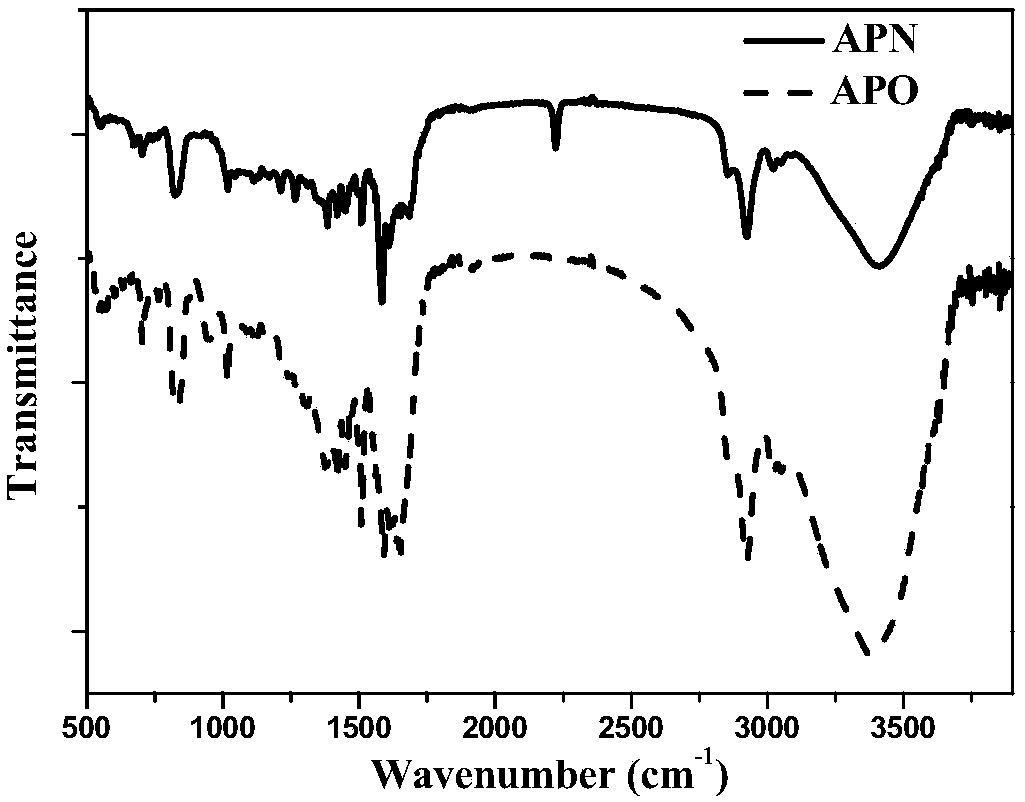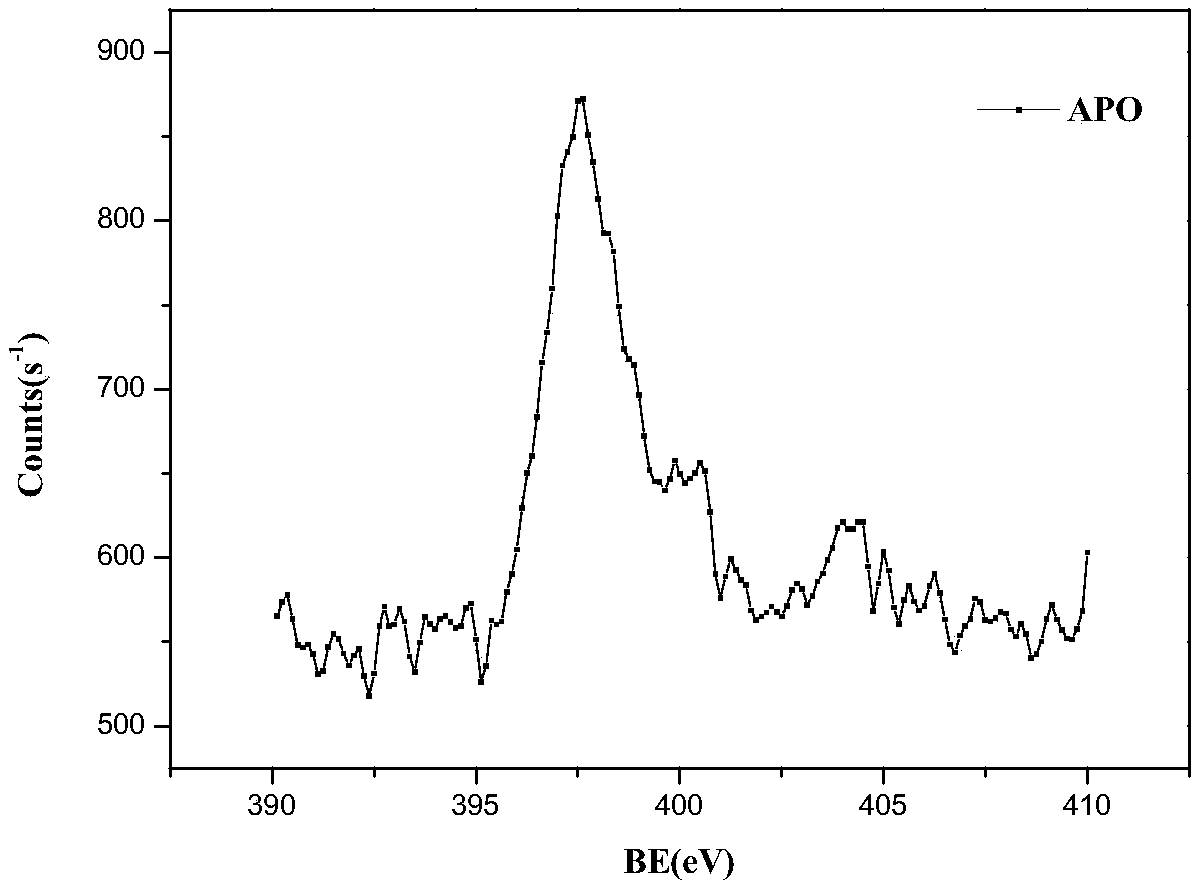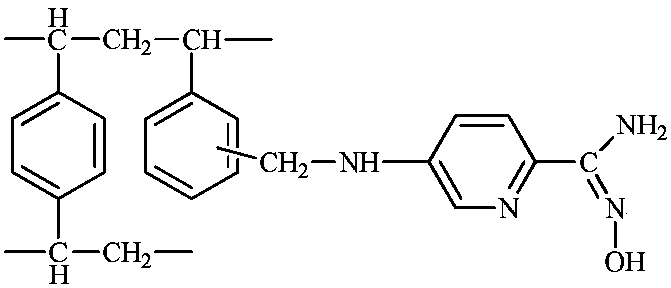Amidoxime-group pyridine chelating resin and preparation method thereof
A kind of amidoxime-based pyridine, chelating resin technology, applied in chemical instruments and methods, other chemical processes and other directions, can solve problems such as the reduction of adsorption capacity, and achieve the effects of low cost, simple operation, significant economic and environmental benefits
- Summary
- Abstract
- Description
- Claims
- Application Information
AI Technical Summary
Problems solved by technology
Method used
Image
Examples
Embodiment 1
[0039] (a) suspension polymerization
[0040] Styrene monomer is filtered through a resin column equipped with a strong base anion exchange resin to remove the polymerization inhibitor;
[0041] In a 1000mL beaker, add 210g styrene, 20g divinylbenzene, and 140g polyvinylpyrrolidone (model PVPK30K-90, brand: BASF, Germany), stir well and set aside.
[0042]In a 1000mL three-neck flask, add 600mL of distilled water and heat up to 50°C, then add 8g of methylcellulose (M15), stir until completely dissolved, and at the same time raise the temperature to 60°C, add 2mL of methylene blue, stir well, add the above styrene , divinylbenzene and polypyrrolidone mixture, add initiator dicumyl peroxide 12.0g; adjust the appropriate stirring speed so that the size of the oil droplet is 0.5 ~ 1mm, gradually heat up to 75°C at a speed of 1°C / 5min, And keep it warm for 2 hours, gradually raise the temperature to 80°C for 2 hours at a rate of 1°C / 5min, gradually raise the temperature to 90°C fo...
Embodiment 2
[0053] Basically the same as embodiment 1, the difference is:
[0054] (a) suspension polymerization
[0055] Styrene is used as a monomer, divinylbenzene is used as a cross-linking agent, polyethylene glycol 4000 is used as a porogen, and hydroxypropyl methylcellulose (daily chemical grade, purchased from Netes Chemical) is used as a dispersant. Use dicumyl peroxide as initiator, adopt suspension polymerization method, synthesize macroporous polystyrene-divinylbenzene copolymer with low crosslinking degree, choose petroleum ether (boiling range 60-90 ℃) as solvent extraction, remove The remaining porogen in the resin channel is dried by airflow to obtain a low-crosslinked macroporous polystyrene-divinylbenzene resin, that is, white ball;
[0056] Wherein, the amount of crosslinking agent is 5% of the total amount of monomer and crosslinking agent, the amount of porogen is 50% of the weight of monomer, and the initiator accounts for 2.5% of the total amount of monomer, crossl...
Embodiment 3
[0066] Basically the same as embodiment 1, the difference is:
[0067] (a) suspension polymerization
[0068] Use styrene as a monomer, divinylbenzene as a crosslinking agent, use polyvinylpyrrolidone (model PVPK30K-90, brand: BASF, Germany) as a porogen, use magnesium hydroxide as a dispersant, and use dicumyl peroxide Using suspension polymerization as an initiator to synthesize macroporous polystyrene-divinylbenzene copolymer with low cross-linking degree, using ethanol as solvent for extraction to remove the residual porogen in the resin channels, and then air drying to obtain low cross-linking polystyrene-divinylbenzene copolymer. Liandaporous polystyrene-divinylbenzene resin, that is, white balls;
[0069] Wherein the amount of cross-linking agent is 5% of the total amount of monomer and cross-linking agent, the amount of porogen is 50% of the weight of monomer, and the initiator accounts for 4% of the total amount of monomer, cross-linking agent and porogen. The dosag...
PUM
| Property | Measurement | Unit |
|---|---|---|
| Particle size | aaaaa | aaaaa |
| Adsorption capacity | aaaaa | aaaaa |
| Adsorption capacity | aaaaa | aaaaa |
Abstract
Description
Claims
Application Information
 Login to View More
Login to View More - R&D
- Intellectual Property
- Life Sciences
- Materials
- Tech Scout
- Unparalleled Data Quality
- Higher Quality Content
- 60% Fewer Hallucinations
Browse by: Latest US Patents, China's latest patents, Technical Efficacy Thesaurus, Application Domain, Technology Topic, Popular Technical Reports.
© 2025 PatSnap. All rights reserved.Legal|Privacy policy|Modern Slavery Act Transparency Statement|Sitemap|About US| Contact US: help@patsnap.com



